Here’s a caveat: if you have Iceland earmarked as your next travel destination, prepare for an indubitable amount of explaining to do. Don’t worry — I’ll talk about that along with some Iceland travel tips as we go along!
Mention a fortnight in France or a month along the Amalfi Coast, and people will react with wide-eyed wistful longing and envious gushes. Apart from that, there’ll be strings of questions involving heavyweight icons like the Eiffel Tower or the colourful villages perched on cliffs. But mention a week’s trip to Iceland, and the momentary pause in the conversation will almost always be succeeded by one question: “But why?”
What to expect before your trip to Iceland
This question is off-handed and almost rude, but quite understandably so. Iceland demands much from the imagination; the country is teeming with a remarkably magical history, culture, and sweeping landscapes. However, there is little tangible evidence to show any of it (except maybe the last). There are no famous pyramids or paintings, no legendary statues or abbeys. But what Iceland lacks, it makes up for with an abundance of spirit and quirk! Icelanders are a compelling mix of wit, creativity, candour, and dark, wintry humour.
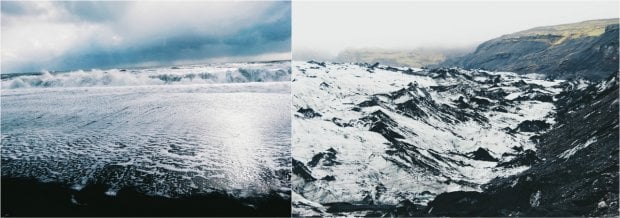
From steep-sided fjords to glacier-carved valleys, moonlight lava fields and bubbling mudpots, Iceland is a deep, bottomless pit of a geography lesson. You’ll be clamouring to remember bits and pieces of random information, like why volcanic magma and lava aren’t the same thing. Unlike most places you’ve visited thus far, you’d be quick to realize that this destination requires at least twice as much planning than the usual norm.
Top Iceland travel tips
If you’re seriously considering Iceland as a future visit, I suggest sitting through this extremely long (but not painful, I promise) read. All these Iceland travel tips are things that you never knew you had to know!
1. Iceland is not for the budget traveller
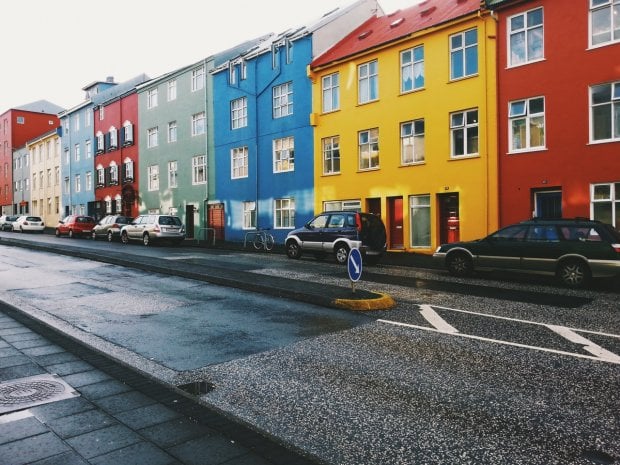
Iceland is quite expensive and definitely not for the budget traveller. Expect jaw-dropping prices in restaurants, grocery stores, bars, and just about any other retail store you can find, although you probably already saw this coming after a quick research on the prices of day trips.
One of the few Iceland travel tips I can think of for the budget-conscious is to spend only on what is necessary. Collect experiences, not things. Splurge on day trips and then apologise to everyone back home when you show up sans souvenirs. If necessary, get them in Finland (which will be your most likely stopover) because they have amazing budget stores there.
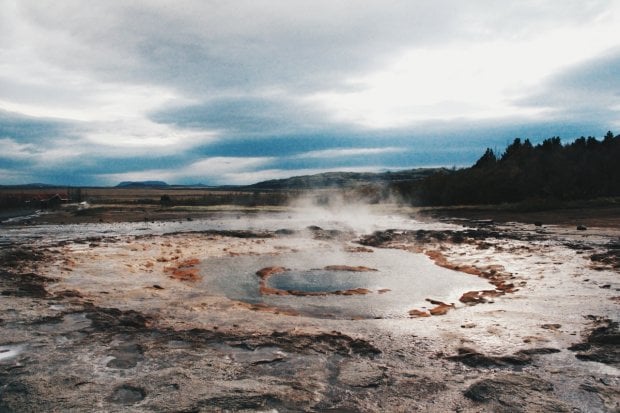
Of course, pack everything you need for your stay so you don’t waste precious financial resources purchasing them in Iceland, which, if you ask me, would just be about the most ridiculous thing you can do. Simple handmade sweaters crafted by Icelandic children in sweatshops will set you back at least $200. Even a decent knit cap or pair of gloves averages $70.
And let’s not forget about food. Food is expensive here. It is so expensive that you should plan like there is no food in Iceland. The idea of packing instant food supplies seems hilarious and almost embarrassing at first, but you won’t be laughing when you realize just how much of your budget is taken up by feeding yourself.
Go out for a meal of puffin meat and fish and chips (but no whale meat please!) just to experience traditional Icelandic food fare; but you don’t want to turn this into a daily affair unless you’re swimming in cash. It is not uncommon for a single burger to cost you S$14 (from a food stand, no less), or a McFlurry-esque type of ice cream to rip you off of $8, so budget smart and make your money last.
2. Chances are, your home currency is not recognised (applicable to those from Southeast Asia)
If you ever need a stark reminder that money really is, at the end of the day, nothing more than paper, try being stuck in Iceland with S$4000 and realising –with increasing dread– that everything you have on you is essentially worthless. This is where complacency takes you, when you walk out of the country’s biggest bank daunted with horror that finally, you’ve found the one developed nation in this world that doesn’t recognize the Singapore Dollar. So used was I to having our beloved currency accepted in all the countries I’d travelled to that it never once occurred to me that there would be places that actually didn’t.
Basic information of such nature was only a Google search away, but apparently even that was too much for me to do. It’s like every possible time I can do something dumb, I choose the dumbest possible thing to do. And yes, what you’ve heard is true: credit cards are accepted everywhere – and I mean everywhere (even in buses for bus fares) – but don’t forget about the mountain of additional currency exchange charges you’d incur from all that cross-border transactions.
3. Sit on the right side on the bus ride to Reykjavik
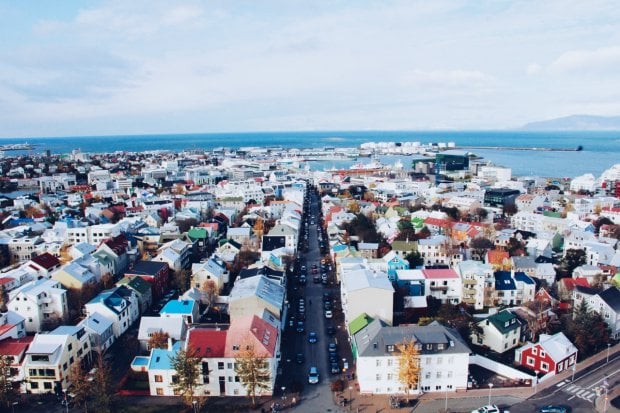
This sounds almost inconsequential, but one of the first mistakes you can make from the airport to the city would be to sit on the wrong side of the bus. The right side is, of course, on the right side. The left looks out on nothing but expansive plains of lava fields with occasional glimpses of the ocean, and by the end of your one-hour ride, you’ll be so sad you’ll want to turn around and come home.
That said, lava fields are a good introduction to Iceland’s bleak beauty of windswept hills and delicate greens and grays; so don’t kill yourself over it if you board the bus full and aren’t able to choose seats at will.
4. Yes, everyone speaks English here!
I don’t know how or where the rumor began, but for some reason, everyone seems to think that Icelanders don’t speak English. Well, they do, so there is no need for an Icelandic crash course before your trip. Everyone in Iceland speaks English. Also, Icelanders are sharp, quirky, and full of wit, so do not be surprised if they hit you with lashes of wintry Brit-styled sarcasm faster than you can say, “Oh, so you do speak English!”
5. Do not mock their belief in elves, fairies, dwarves, and the whole motley crew of mythical people – they aren’t joking
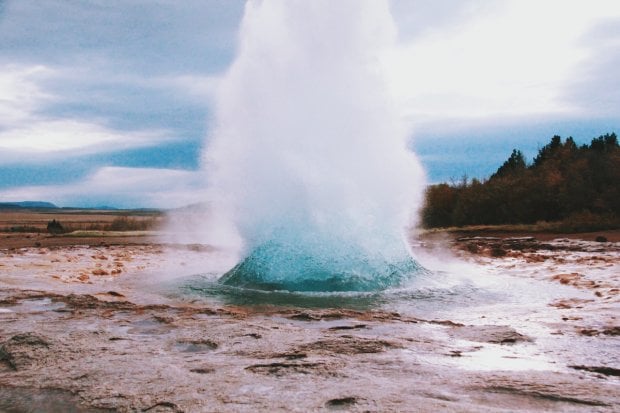
54.4% of the Icelandic population believes in the existence of magic folk, which essentially means that one in every two Icelanders you meet will most likely believe in creatures of the netherworld. Just as how topics about politics and religion and sex and salary are sensitive to the rest of the world, this folklorish one is especially sensitive to the Icelanders too. It definitely isn’t something they feel comfortable discussing with outsiders.
Theories about why they seem prone to such superstitions centre on their earliest settlers’ struggles to endure their isolated existence in such a majestic yet unpredictable landscape. With half the nation in on this one, the perceived existence of these magical people is serious enough to spark nationwide environmental protests to this very day. And if that doesn’t tell you not to mess with their superstitions, I don’t know what will!
6. The water smells nasty, but drink it
Sulphur smells like rotten egg, and you’ll learn this fast enough when you turn on the faucet in Iceland. (I give you three seconds, tops). Fact is, the water smells because of geothermal energy, which stems from the Earth’s belly. Therefore, what you’re really smelling is the scent of sulphur at the core of Earth.
But FYI — water which reeks this badly is actually one of the cleanest water to drink in this world! I’m not saying that knowing this fact makes it any easier to consume (or the stench any easier to inhale). But hey, it definitely does save you a hell lot of money on bottled water (which, surprise surprise, isn’t cheap at all).
7. Alcohol cannot be found in supermarkets
Alcohol is sold in bars, restaurants, and cafes, but never in supermarkets because, believe it or not, this country once had total prohibition on alcohol right up till 1989 (which isn’t that long ago if you think about it). The ban has been lifted since, but you’d be lucky to find anything stronger than 2.25% except at the state-owned alcohol chain called Vínbúðin (meaning “the wine shop”).
Shops that sell alcohol are deliberately few and spaced out, with restrictive opening hours. There is also a peculiar Icelandic attitude to alcohol; while the legendary Icelandic weekend all-night partying is somewhat accepted, there is also the stereotype that anyone drinking anything at all for the rest of the week must be an alcoholic.
8. Don’t expect to see comfort brands
When you’re a frequent traveller, you tend to get used to seeing familiar brand names no matter where you go, like McDonald’s and Starbucks even. Unfortunately — or fortunately, depending on how you look at it — Iceland has none of these. This resplendent nation is so inherently homegrown that you’d be hard-pressed to find anything commercialised or remotely mainstream here.
In its place, however, is an endless string of quirky businesses dominating the country’s retail scene. The best peanut butter milkshake I had ever tasted is the one from the American Style Diner in the heart of Reykjavik. Also, Chuck Norris Grill serves some pretty kickass burgers and fries (with a name like that, it’d better). Stop by Dogma for the wackiest range of souvenirs and accessories (I found a Kwikee Mart tote bag! Simpsons fans, anyone?). And in their supermarkets, the only brands you’ll find yourself acquainted with are Lays & Ruffles.
Iceland seems to be doing just perfect serving a nation of just 300,000 people without any help from the giants of the consumer world.
9. You have to strip down before entering the Blue Lagoon
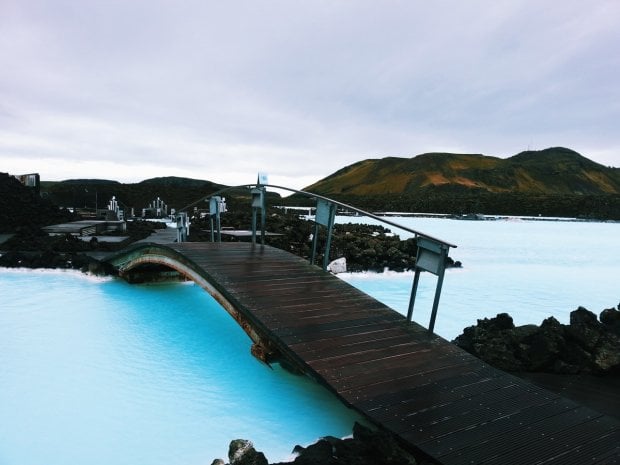
You may or may not have heard: if you want to soak in this geothermal pool of celestial sorts, you will have to shower naked before entering. My advice is to just get over it because there is no way around this.
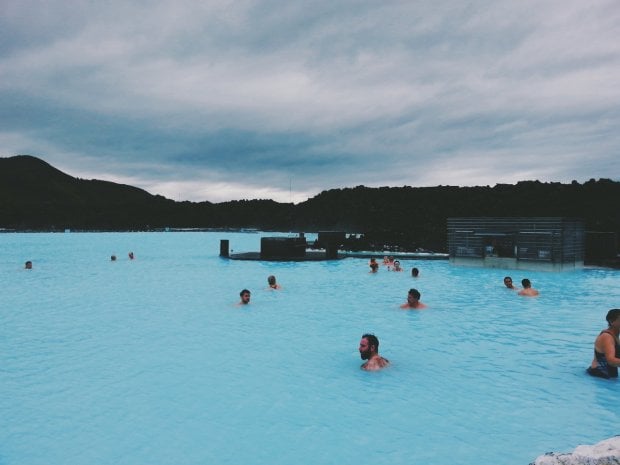
The stalls at the Blue Lagoon come designed without doors, so unless you intend to shell out S$70 just to sit in the locker room and sulk over the… transparency of your situation, strip down and move on. And if you think your ordeal is over, you won’t be pleased to know that you have to go through the same thing after. Hey, at least the bathrooms are gender-specific, right?
10. A SLR/DSLR/Any Sort of SLR is important

My single biggest piece of advice: do not attempt serious photography in Iceland without an SLR. At the end of the day, you’ll be left with nothing but an SD Card full of subpar pictures, scratching your head and wondering why all you see is darkness when clearly, you had your camera aimed at the mystical Northern Lights the night before.
I’m not saying that everyone has to be a professional photographer to get photo-taking in Iceland right. But the fact of the matter is, so many shots of this paradise’s ethereal sights will turn out lacking at best if you settle for equipment that’s any less!
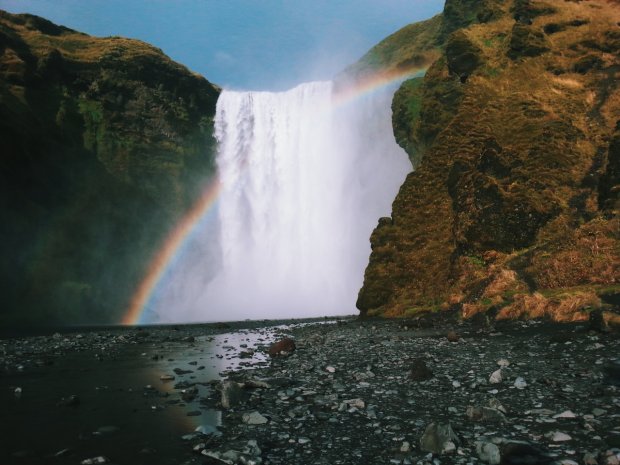
Other less pressing Iceland travel tips include bringing a towel with you; some of these waterfalls are big enough to mist up your lenses from even 500 metres away. Also bring a tripod – unless, of course, you have the ability to hold your chunky camera perfectly still for 20 seconds running. You see, 20 seconds is the recommended exposure time for capturing the Northern Lights, but I find that anything beyond 10 is good enough, provided you get your ISO right.
Invest in a spare battery because chances are, you will be snapping away the entire day, which takes up a lot of battery energy. Some websites may even advise bringing a couple of spare batteries because they do tend to run out faster when temperatures start dropping – but trust me, Iceland isn’t that cold (refer to Point #12). If anything, Iceland is actually one of the ‘warmer’ places to catch the Northern Lights!
Also read: How to Capture The Northern Lights in Iceland
11. Do not plan excessively in advance
The weather in Iceland is as unpredictable as Britney Spears circa 2007. One minute it’s sunny, the next it’s raining. And just when you’re about to cancel all plans for the day, the atmosphere fills with fog so dense you wonder if you’ve been transported to that same wondrous mythical world half of Iceland believes in. (Is it any wonder that they believe in it all?) Anticipate weather changes astronomical enough to rival its drastically varied landscapes.
As it is, Reykjavik was insufferably cold at 1°C when I first arrived, but a comfortable 12°C when I left two weeks later. Packing for various degrees of cold is important, but what will be even more important would be to cut your itinerary some slack. Leave a couple of days completely empty. If nothing else, you can use this time to linger around the outskirts of this very wonderful city.

As it is, my trip to Iceland began with a 12-hour flight delay; which resulted in my arrival in Reykjavik being 24 hours later. This disrupted the whale watching and Northern Lights trips I had booked for the first day, which I then had to scurry to reschedule on a later date. Subsequently, my glacier hike was also postponed because the drafts were too strong that morning; and of course, let’s not forget the ever-unpredictable Northern Lights!
Most travel companies will offer a free second trip valid for the next two years if you’re unlucky the first time around (which I was). So, don’t leave this activity to the very last night of your stay – unless, of course, you have every intention to extend your stay!
12. Temperatures aren’t extreme, and winter travel is a real possibility
It is primary nature to imagine frozen tundras and frigid temperatures whenever Iceland is mentioned. How disappointed you’d be then, to learn that Iceland isn’t covered in ice (that, I believe you’re probably looking for Greenland); and that it isn’t even really a country of extremes when it comes to temperatures – in all relativity, Iceland doesn’t get half as cold as, say, Britain, or even Kazakhstan, can get.
Don’t get me wrong: Iceland is cold, but it just not as cold as what you have in mind. If anything, the country’s winters present a buffet of lights and colors that don’t always manifest itself during other seasons, and it is always during these three to four months that everything magically appears softer and more… arresting. Rents and tours and accommodation are also generally cheaper during this period too, making winter travel in Iceland not just a possibility, but a relatively more budget-friendly possibility at that too.
Also read: The Ugly Truth of Winter Travel
13. Anticipate that you’ll never want to leave
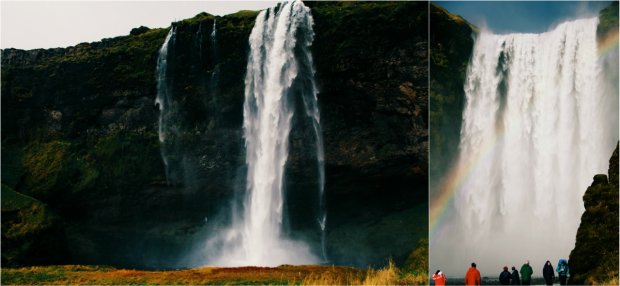
Yes, you will fall in love with Iceland. It will be the most beautiful thing you’ve ever seen. You will repeat to yourself in as many ways as you can; until you finally run out of ways to say it. The grace of the Northern Lights will make you cry, the magnitude of the Gulfoss will leave you breathless, and the highly unpredictable Strokkur will make you hold your breath for seconds at length, before finally sending your heart soaring as high as its erupted body of water. Heck, even the Icelandic horses are a cut above the rest: graceful and statuesque in ways that will make you fall in love.
There is no question: the vast landscape of this magical, far-flung island will blow you away; leaving you wanting more than just, more. And the fact that there is no possible way to see the whole of Iceland in two weeks (or even just a month) will leave considering the idea of never coming home.
Also read: 8 Airbnb Homes in Iceland for When You Finally Make That Trip
Of course, sense will get the better of you and you will get on that flight back. But know that once a thought like that comes to mind, it rarely ever leaves your heart alone after!
Enjoy Iceland. I know I did.




